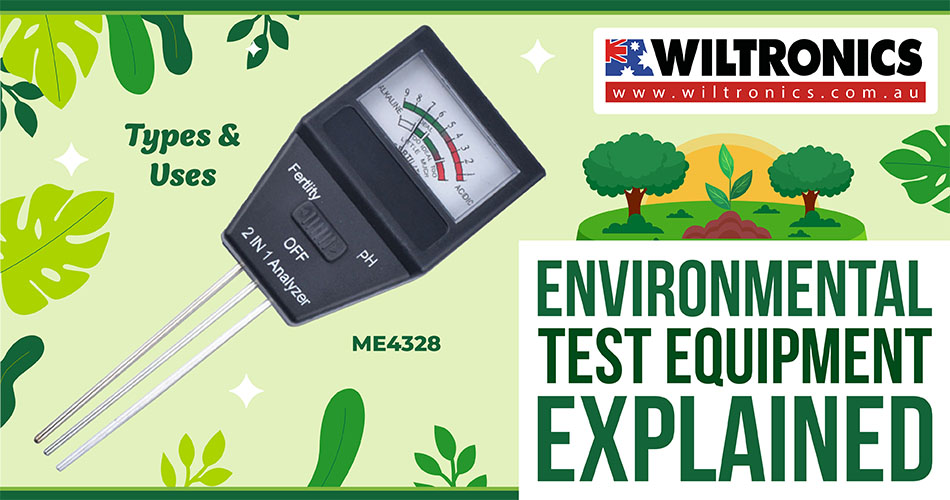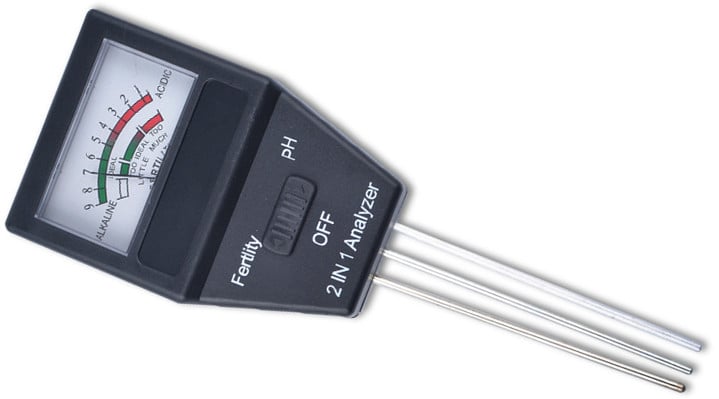Environmental Test Equipment Explained: Different Types & Uses
August 10, 2022

Environmental test equipment plays an important role in many fields and laboratory settings.
Environmental test equipment comes in various forms. Each testing tool acts as the basis for checking diverse climatic conditions.
These devices make testing and measuring data in a natural environment convenient. Particularly when ‘environmental stresses’ are around, such as temperature, humidity, and vibration.
Moreover, there are three fundamental forms of environmental testing. Their differences and applications are easy to identify, and soon you will know why.
Here, we will break down the types, importance and key applications of environmental test equipment and monitoring.
If it is weather monitoring equipment you are looking for, check out our range of Weather Stations here!
Environmental Test Equipment Explained
You can find multiple meanings and explanations for Environmental test equipment on the Internet. But environmental tests and awareness, in general, allow us to understand two things:
- the state of the surrounding environment,
- and the activities that can cause harm to the environment.
They are crucial to identifying and resolving the issues within our planet’s system. Especially given that people around the world greatly depend on Earth’s natural conditions.
The human population, industrial activities, and energy continues to grow. Thus, enhancing the accuracy of environmental monitoring reports is more important than ever.
With technology, we can monitor the climatic environs and determine the hazards within. We are talking about specialised devices for tracking the status of environmental factors.
Environmental laboratories, for one, conduct quality control and assurance by implementing tests. This includes contamination analysis, emissions and water quality testing, to name a few.
Other monitoring tools are used to test for surface and airborne contaminants. This is especially crucial within pharmaceutical-controlled environments. Enter indoor air quality testers.
As mentioned, there are three main types of environmental monitoring:
- Soil
- Atmosphere
- Water
Some techniques include filtration, sedimentation, condensation, and composite sampling, to name a few. Data collected from these methods can be input into a DBMS. From there, the data can be categorised, analysed, and visualised.
Three Types of Environmental Monitoring
1. Air Monitoring
Environmental data gathered using specialised observation tools is integrated into air dispersion models. Equipment includes sensor networks and Geographic Information System (GIS) models.
Various environmental networks and institutes also contribute to the process. Overall, they combine emissions, meteorological, and topographic data. This detects and predicts the concentration of air pollutants.
Air quality monitoring is now more technically demanding. It also requires skilled support to provide high-quality results. There are essentially two types: emissions and ambient.
Ambient air quality reflects the release of pollutants from human activity and natural sources. Ambient pollution is what we breathe, which should not be confused with emissions.
Emissions, in contrast, can include Continuous Emission Monitors (CEMs). It measures smoke density, noise monitoring, and fuel quality analysis.
Air emissions sources that meet or exceed the criteria must get an Air Quality Approval. This allows the facility to operate and establishes limits for emissions.
High humidity also increases the rate of harmful chemicals in the air, mainly indoors. Hence why monitoring temperature and humidity at home is crucial.
Check our wide selection of Temperature and Humidity Monitors.
2. Soil Monitoring
Grab sampling and composite sampling play a major role in soil monitoring. Both are also used for setting baselines and detecting threats such as:
- Acidifications
- Biodiversity loss
- Compaction
- Contamination
- Erosion
- Organic material loss
- Salinasation
- Slope instability
Salinity monitoring, for one, uses remote sensing, GIS, and electromagnetic induction. If imbalanced, it can affect water quality and plant yield.
Whereas contamination monitoring uses chromatography and spectrometry. These chemical techniques measure toxic elements, like nuclear waste and acid rain.
These are only a few of the soil monitoring processes. Each is designed for different factors, such as erosion monitoring for erosion, e.g. rainfall, mass movement, and surface runoff.
This 2-in-1- soil tester works well for acid monitoring for plants’ pH and fertility.

Soil Tester 2 in 1 – pH and Fertility
Product code: ME4328
A handy 2-in-1 soil tester to keep your plants in the best condition! Use this to test the pH and fertility of soil to determine suitability for planting.
3. Water Monitoring
Water monitoring is the sampling and analysis of water constituents and conditions. It aims to alert us to current, ongoing, and emerging problems. And to determine compliance with drinking water standards.
There are many ways to check water conditions. But most are managed by federal, state, and local agencies, universities, and volunteers.
To ensure access to clean water for both indoor and outdoor (personal) use, a water purifier is your best bet.
Importance of Environmental Monitoring
Environmental monitoring highlights the relationship between the environment and our health. The main advantage lies in its ability to improve the quality of life for society.
Practical environmental monitoring applications include the following:
- Protection of public water supplies.
- Management of hazardous and radioactive waste.
- Identification and analysis of pollution sources that affect urban air quality. Plus, it impacts human health.
- Protection and management of natural resources like soil and water supplies & weather forecasting.
- Identifying population density patterns in relation to natural resources and economic development,
- this includes mapping natural resources, endangered species protection, and global climate change.
Key Applications of Environmental Testing
The key applications of environmental testing include:
- Environmental chemical testing
- Agriculture
- Public health and safety
- Field testing
- Petroleum
Depending on your application and budget, there is environmental test equipment to meet the demands in and out of the lab setting. GC systems, autosamplers, and software are also used in environmental testing. Plus, HPLC systems for carbamate and explosive analysis.
Environmental testing can identify and quantify compounds and pollutants in air, water, or soil. Alternatively, it can verify that a piece of equipment will perform as expected once it is out in the world.
This can take the form of climate testing (e.g. temperature or humidity). Or mechanical testing (e.g. measuring shock or vibration).
Overall, environment test equipment lets analysts collect, track, visualise, and analyse data from an environment. Even better, at lightning speeds. In return, this keeps us informed of the state of our environment.
© Electrotech Brands Pty Ltd 2022


Write a Comment
You must be logged in to post a comment.